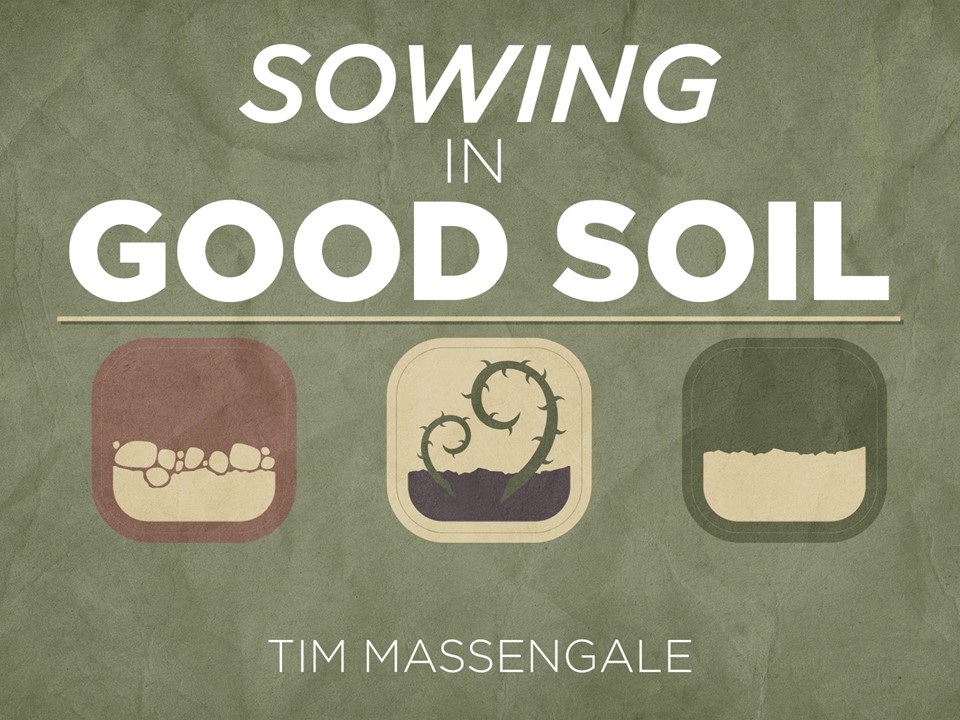By Tim Massengale
To View the Entire Article, Click Here
To Download the Entire Article, Outline, or PowerPoint, Click Here
Carl sat up a bit straighter in the seat and scowled at the old McCormick tractor below him. He wasn’t about to let this collection of rust and iron get the best of him. Carefully he adjusted the throttle down and increased the choke just a bit more.
“Lord, I need your help here!” he growled to himself. He was getting used to the old tractor’s peculiarities. But sometimes it didn’t want to cooperate no matter what he did.
The old engine turned over three times, coughed loudly, and then roared into life with a mighty belch of white smoke. Carl grinned. With only twenty more acres to plow, he should be through by dinner time. Putting the tractor into gear, he carefully pulled out into the field.
Five hours later, he was done. He looked at the freshly turned soil and thought over what the Ag Extension Rep had told him. “First, plow your soil to an 8” depth. Next, test the soil and, if needed, add a soil conditioning agent to balance your PH level. Third, form your seed beds with 18” wide rows. Fourth, inject your starter fertilizer along with your seed. Drill your seed no deeper then 1½ inches. You should have seed emergence within 10-12 days, weather permitting.”
It sounded easy when the old fellow had explained it. But those simple steps took many dozens of hours to accomplish. He looked over the gently rolling hills that would soon be covered in soybeans. Silently he prayed, “Lord, with your help, I will have my first harvest this fall. You, my God, are the Lord of the harvest. Help this harvest to be successful. And thank you, Lord, for giving me this opportunity.”
It was getting dark when Carl latched the barn door and turned toward the old farm house where his wife and children were waiting dinner. He felt a surge of confidence. It was going to be a good year.
Preparing the Soil
Carl quickly learned that successful farming was more than simply putting seeds into the ground. It also required many hours of work before the first seed could be planted. Likewise, a church must understand that soil preparation is a prerequisite to bringing in a harvest of souls. The seed is the Word of God. The sower is you and I, who are laborers together with Him. And the soil is the lost of this world. We must choose carefully where we sow the seed of God’s word. Why? Because the church has only so many laborers to send into the harvest. They can spend their time sowing seed in poor soil or in good soil. But since we have a limited number of workers and these workers have a limited amount of time they can contribute, we need to utilize the resources that the Lord had given us wisely.
Jesus told us that there are different types of ground (Luke 8:4-8). Some soil will be hard and unyielding, refusing to allow the seed to enter their heart. Others will be full of thorns and weeds. Still others will be shallow and full of stones. But much soil will be fertile and open to the seed of truth and new life will spring up. A wise farmer knows that if he conditions the soil properly, his yield will be far greater than if he casts the seed upon unprepared ground.
So let’s look at the many places that the church can consider planting the Gospel and see how we might prepare these hearts for God’s Word.
To View the Entire Article, Click Here
To Download the Entire Article, Outline, or PowerPoint, Click Here



